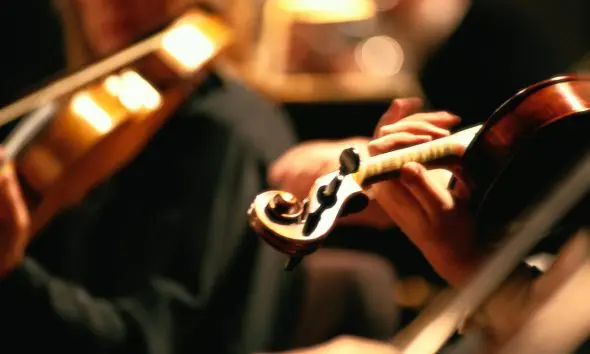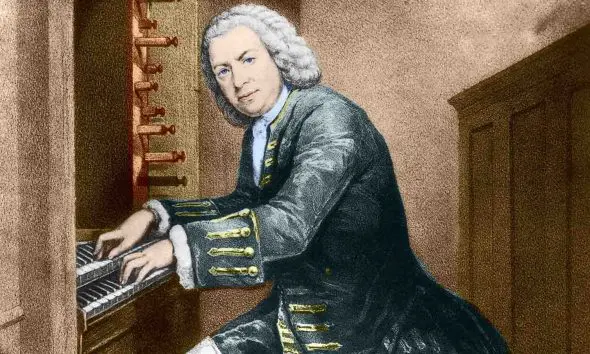reDiscover Bach’s ‘Prelude In C Major’
Our masterpiece guide to Bach’s ‘Prelude in C major’, from ‘The Well-Tempered Clavier’, features a lesson with Lang Lang.

There’s something special about the sheer purity of Johann Sebastian Bach’s ‘Prelude In C Major’. The first gentle unfurling of the C major chord, one might feel, is where the whole story of modern Western music begins. Well, not quite – it goes centuries further back. Yet this prelude is still a kind of tabula rasa, a tiny but perfect distillation of musical logic.
Listen to our recommended recording of Bach’s ‘Prelude In C Major’ from Lang Lang’s Piano Book and scroll down to read our masterpiece guide featuring a lesson with Lang Lang.
Bach’s ‘Prelude in C major’
The ‘Prelude’ is the first half of the first piece in Bach’s The Well-Tempered Clavier, which consists of two books of 24 Preludes And Fugues each (48 in total) for solo keyboard. Their creation occupied Bach for decades. He completed Book 1 in 1722, during his last year as Kapellmeister of Prince Leopold’s court at Anhalt-Köthen. Book 2 did not take its final form until 1742.
Each book contains one prelude and fugue in every key, arranged in a systematic format that steps along the chromatic scale. C major is followed by C minor, then C sharp major and minor, then D major and minor, and so on. Each prelude serves as a curtain-raiser, contrast, or palate-cleanser before its fugue.
The Well-Tempered Clavier
The title The Well-Tempered Clavier deserves some explanation, too. The original tuning of baroque keyboard instruments little resembled that of the modern piano: the overtones in some keys were more exact, more finely nuanced, and “in tune”, but others sounded extremely discordant and therefore composers often hesitated to use them. In the 18th century a new tuning system called ‘equal temperament’ divided the scale into 12 equal semitones. Those subdivisions had been unequal in older systems – hence the painful dissonances. In his Well-Tempered Clavier Bach was, in a way, seeking to liberate all the keys and explore their inherent characters.
Still, the reality is not so simple. Apparently, Bach used to tune his own instruments and never let anyone else do it for him. Certain observers spoke of a personal system he had developed to which nobody else knew the secret…
‘Prelude in C major’
So, why begin this great cycle of Preludes And Fugues in C major in particular? At the keyboard, C major is a blank slate: its scale consists only of what we usually term the piano’s ‘white’ notes (NB on the harpsichord those same notes are often colored black or brown).
Philipp Spitta, the first important Bach scholar, described Bach’s ‘Prelude in C major’ as “a piece of indescribable fascination, in which a grand and beatific melody seems to float past like the song of an angel heard in the silence of night through the murmur of trees, groves, and waters.” Any such melody, though, is implied rather than stated. The piece is harmony alone, woven from a constantly repeated figuration of broken chords. In 19th-century France, Charles Gounod wrote a song over the top – his ‘Ave Maria’ – but the prelude has no need of such additions.
The piece pursues just one musical idea – in baroque terminology, one ‘affekt’, or mood/atmosphere. A good number of the other preludes are similarly based on a single pattern or figuration. Later composers took inspiration from this for preludes of their own – notably Chopin and later Debussy.
It begins with a simple four-bar phrase centering on C, then begins to modulate (successive harmonic progressions lead the music into other keys). The harmonies become increasingly colorful as their journey progresses. First, it travels to the dominant, G major, then back to C and briefly to F major; some deliciously scrunchy chromaticism leads to a long ‘dominant pedal point’ (the repeated bottom G in the bassline) and then a ‘tonic pedal point’ (the long-held C in the bassline) that carries the prelude to its conclusion.
Can I play it?
Bach’s instructions to the performer are very limited. Each pianist or harpsichordist must therefore decide for themselves how fast to play, how smooth or detached the notes should be, what volume to adopt and how much to manipulate it as the piece goes along. Most opt for a moderate tempo that feels natural for the pace at which the harmonies change.
In terms of dynamics, Bach’s ‘Prelude in C major’ often emerges on the quiet side, with mild crescendos and diminuendos enhancing the breath-like quality of those phrases where successive chords suggest conflict (in-breath) and resolution (out-breath) (see Lang Lang’s comments in his video). Intriguingly, a bar known as the ‘Schwencke measure’ – allegedly added by one Christian Friedrich Gottlieb Schwencke – appeared in some early editions, between bars 22 and 23; the harmony is vivid, but the disruption to the piece’s regular “breathing” pace feels slightly unlikely.
The modern pianist faces particularly tricky decisions since the instrument is so different from the harpsichord for which Bach was of course writing. For instance (as Lang Lang points out) there’s the matter of how to sustain the harmony, yet keep the articulation distinct. Rather than applying lots of pedal, which the harpsichord did not have, the left-hand holds the first two notes of each broken chord, as Bach indicates, while the right hand delineates the successive notes.
On the other hand, the harpsichord’s natural resonance can lend its sound a less “damped” quality than the piano, so some would argue that using the loud pedal is maybe not so “inaccurate”. To which a harpsichordist might respond that it’s not the same thing… These arguments could continue forever – and they tend to.
Indeed, some musicians still insist the piano is just the wrong instrument for Bach. Yet as the 21st century steams on, it would be criminal to discard such wonderful music simply because today’s instruments have evolved in new ways. Ultimately the purity and strength of Bach’s works can withstand pretty much anything.
Behind The Scenes With Lang Lang
Recommended Recording
Bach’s ‘Prelude In C Major’ from Lang Lang’s Piano Book – a collection of pieces that first inspired Lang Lang to play the piano as a child and led him on his path to international stardom.
Lang Lang said, “I dedicate this album to my wonderful piano students and all my friends around the world who love the piano as much as I do.”
Lang Lang’s Piano Book can be bought here.
Listen to the best of Bach on Apple Music and Spotify.





Mr. Robert H Stiver
October 29, 2020 at 11:31 am
I watched a YouTube presentation of the Prelude about four years ago by harpist Amy Turk. Her artistry was and remains divine…gave me indescribable solace in the first months after my wife’s passing in August 2016.